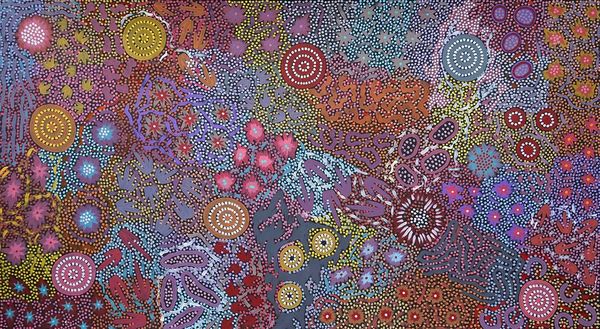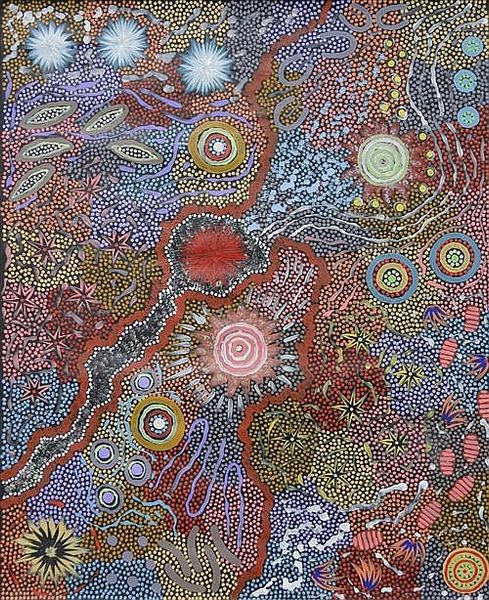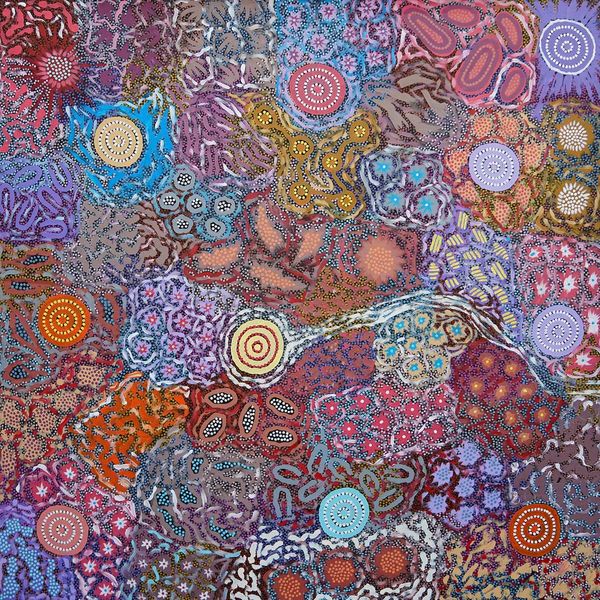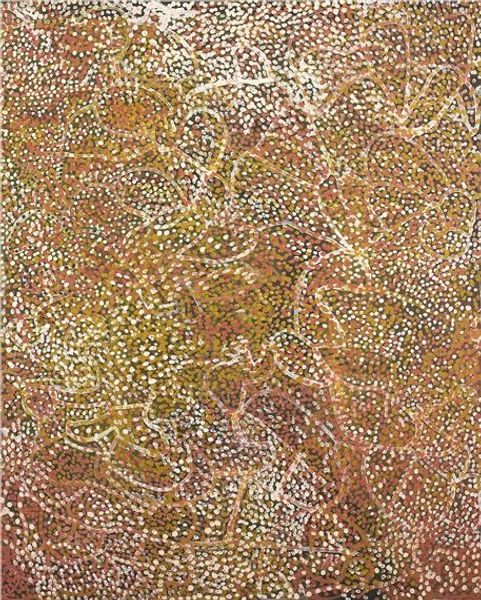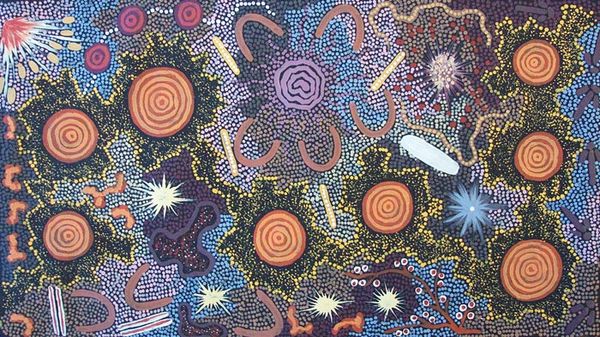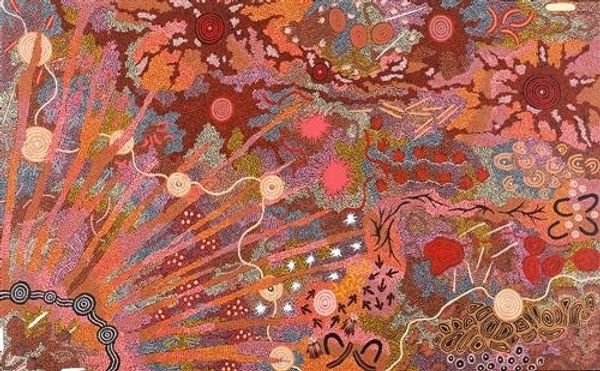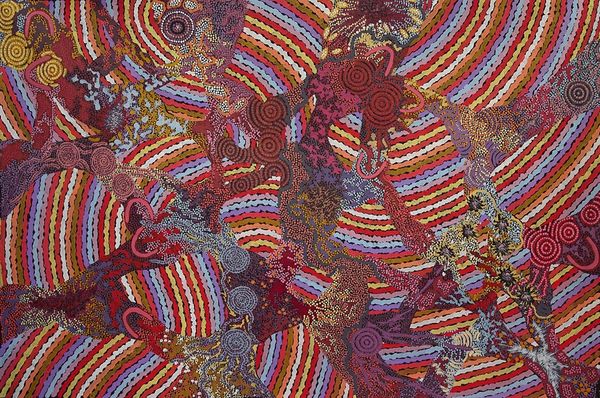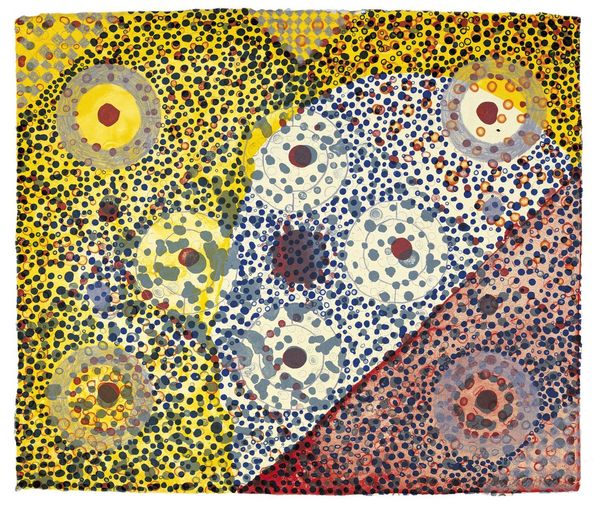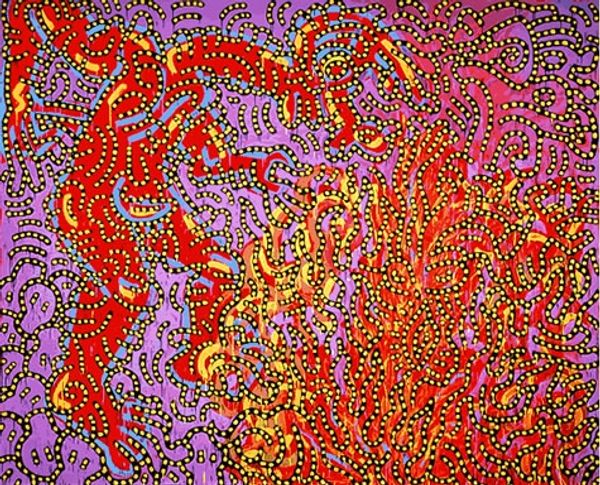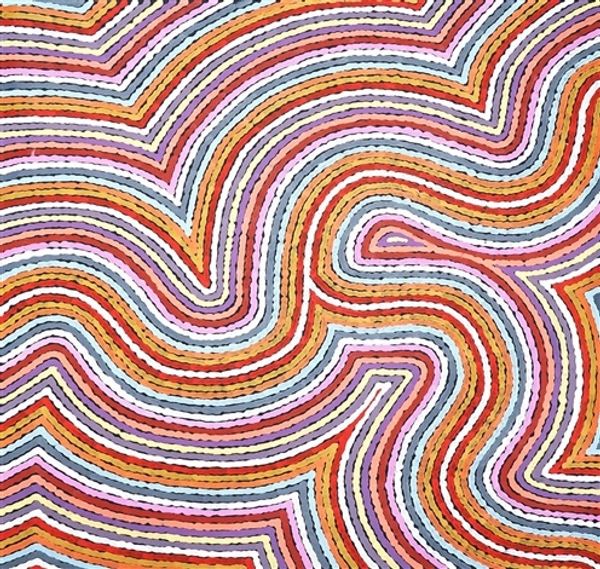
painting
#
natural stone pattern
#
naturalistic pattern
#
organic
#
painting
#
pattern
#
geometric pattern
#
abstract pattern
#
organic pattern
#
flower pattern
#
abstraction
#
pattern repetition
#
layered pattern
#
pattern in nature
Copyright: Michelle Possum Nungurrayi,Fair Use
Curator: The piece before us is titled "Grandmother's Country," by Michelle Possum Nungurrayi, executed in acrylic on canvas. Editor: Wow, my initial response is an overwhelming sense of complexity! It's so rich with detail and layered textures. I find it vibrant, even kaleidoscopic. What's the symbolism behind these forms? Curator: Michelle Possum Nungurrayi belonged to the Anmatyerre people of the Central Desert, where such art embodies an intrinsic connection to the land. Symbols commonly denote aspects of the landscape—waterholes, plant life, the ancestors' travels across the desert—deeply tied to cultural memory and lived experience. Editor: Given the title, is it then, about the role of women and their ancestral connection to the land? A statement about preserving knowledge passed down through generations? Curator: Indeed, it speaks to the powerful position of women within Aboriginal communities, the custodians of knowledge. Dot painting—a technique perfected in this context—also has origins in covering sacred grounds, veiling secrets from those uninitiated. Editor: Fascinating! This visual layering serves both to reveal and conceal narratives simultaneously. It's not just beautiful abstraction but a testament to cultural resilience and the complexity of indigenous worldviews. How is this conveyed, visually? Curator: Through layered patterns that are built around specific landscape and Dreamtime narratives. Circles often represent waterholes, meeting places; meandering lines chart songlines—the paths of ancestral beings; all of which collectively embody stories that reinforce connection between people, place and the past. Editor: I appreciate that this vibrant mosaic challenges Western notions of landscape art as mere visual representation. It transforms landscape into a profound carrier of cultural history, of embodied knowledge, which carries strong sociopolitical meaning, resisting cultural erasure by staking claims of sovereignty. It is not passive. Curator: Absolutely, and its sustained visual language stands as a testament to its resilience and continuing significance in contemporary Aboriginal identity. Every image, every color tells its own story. Editor: This reframes my appreciation. It transforms this acrylic painting into something profoundly powerful, reminding us that landscapes are not simply neutral backdrops; they are battlegrounds of memory and resistance. Curator: Yes, “Grandmother’s Country” is, above all, an ever-evolving legacy inscribed onto canvas, holding generations together through ancestral storytelling. Editor: It's given me such a deeper awareness of art's responsibility, particularly concerning legacies of colonialism and identity reclamation.
Comments
No comments
Be the first to comment and join the conversation on the ultimate creative platform.
